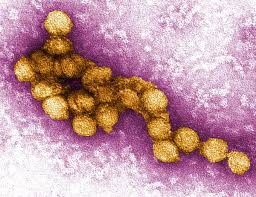The growing consumption of processed and packaged food in India could negatively impact health outcomes, prompting the need for regulatory measures to manage the nutritional content of these products and promote healthier alternatives, according to a report released by the Economic Advisory Council (EAC) to the Prime Minister.
Titled ‘Changes in India’s Food Consumption and Policy Implications’, the report highlights a significant shift in household spending patterns, with an increasing share of expenditure directed toward served and packaged processed foods across all regions and income classes. The trend was particularly pronounced among the top 20% of households and in urban areas, reflecting the rapid urbanization and lifestyle changes driving the demand for convenient food options.
“While the food processing industry is a burgeoning sector and a key contributor to job creation, the rising consumption of processed and packaged foods is likely to have implications for public health,” the report warned.
Surge in Processed Food Consumption
India’s food and beverage packaging industry has experienced substantial growth, with the market size projected to expand from $33.73 billion in 2023 to $46.25 billion by 2028. This growth is fueled by rising demand for ready-to-eat meals, snacks, and beverages, driven by a combination of increasing incomes, urbanization, and evolving dietary preferences. However, this shift toward processed foods raises concerns about nutritional quality, with packaged products often high in sodium, sugar, and unhealthy fats.
The report calls for further research to evaluate the nutritional impact of this dietary shift and suggests that policies may be necessary to regulate the nutritional composition of processed foods while encouraging the adoption of healthier alternatives.
Anaemia and Dietary Diversity
The report also examined the relationship between dietary diversity, iron intake, and the prevalence of anaemia in India. It found a strong inverse relationship between iron intake and the prevalence of anaemia, meaning that as iron consumption increased, the incidence of anaemia decreased. However, the analysis revealed an even stronger negative correlation between anaemia rates and dietary diversity, particularly in the diversity of iron sources.
This observation was consistent across states and Union Territories (UTs), leading the report to emphasize that government efforts to reduce anaemia, particularly among children and women, must focus not only on increasing iron intake but also on improving the variety of iron-rich foods in people’s diets.
Decline in Cereal Consumption and Micronutrient Intake
The paper also identified a significant 20% decline in cereal consumption, a staple food and an essential source of micronutrients like iron and zinc, which is likely to impact the overall nutritional intake of Indian households. As cereal consumption declines, there may be a corresponding decrease in the intake of key micronutrients, further complicating efforts to combat nutritional deficiencies.
The report acknowledged that the exclusion of served and packaged processed foods from the micronutrient analysis represents a limitation and recommended that future studies investigate the broader health implications of increased processed food consumption. A deeper understanding of the connection between dietary diversity and other health outcomes, including metabolic disorders and chronic diseases, was deemed necessary to guide policy decisions.
Policy Implications
The findings from this report come at a crucial time when India is grappling with the dual burden of malnutrition—rising obesity rates alongside persistent micronutrient deficiencies. The need for well-informed policies to address these challenges is clear, with the EAC recommending regulatory measures aimed at improving the nutritional profile of processed foods while promoting traditional diets rich in whole grains, legumes, and diverse sources of essential nutrients.
As the country continues to develop, it will be important for policymakers to balance economic growth in the food processing sector with public health considerations to ensure that nutritional security remains a top priority.











